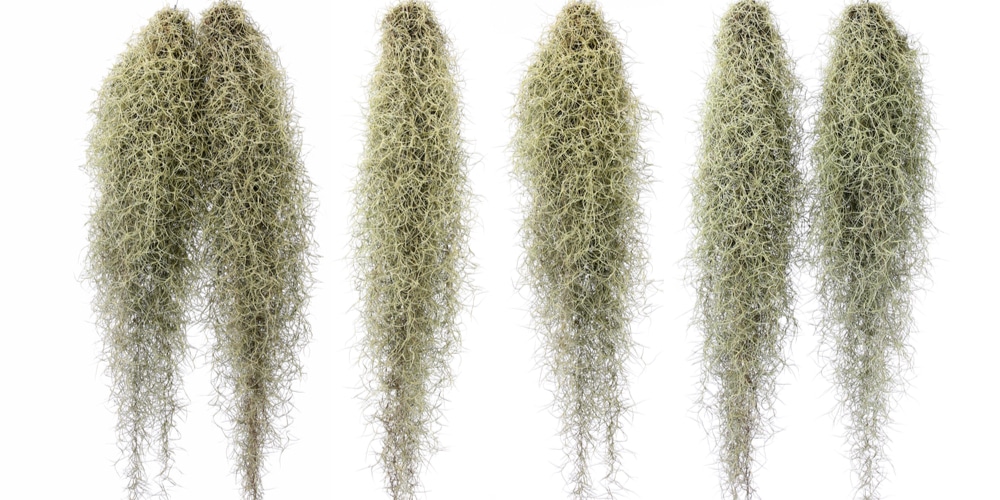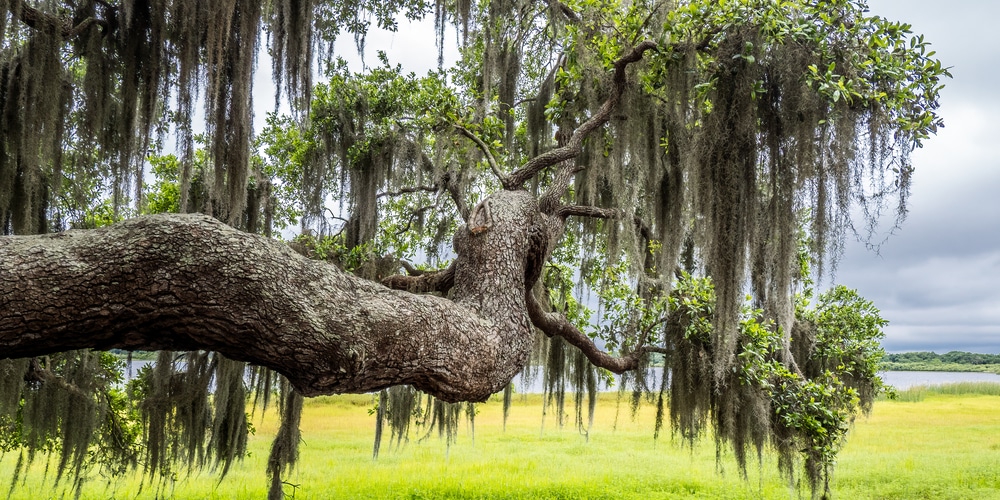Spanish moss forms a large part of the natural beauty of the southern regions. Essentially, it is an epiphytic flowering plant that often grows upon and hangs off trees and landscape plants in tropical and subtropical climates.
Despite it being beautiful and useful, Spanish moss is normally seen as a bad thing and, actually, surrounded by many superstitions.
One of the widespread and popular beliefs about Spanish moss is that it kills trees. This belief gets more strength when dying trees, particularly those heavily draped with Spanish moss, are pointed to as proof these bromeliads kill trees.
So, does Spanish moss kill trees? No, but it can speed up the death of an already dying tree.
Does Spanish moss kill trees?
Spanish moss colonizes trees strictly for support. This post will cover more about Spanish moss to help you understand it better.
About Spanish moss
Neither moss nor Spanish, the Spanish moss (Tillandsia usneoides) is an epiphyte, a plant that grows on other plants but does not rely on the host for nutrients. Instead, it takes nutrients from air and debris that collects on the host plant and moisture from mineral water that runs down branches and leaves — it has permeable scales that catch nutrients and moisture.
Although it doesn’t look like one, it is a member of the bromeliad family, which places it in the same taxonomic class as pineapples and other succulent house plants.
Spanish moss grows in tropical regions that see about 300 frost-free days per year. It has a special preference for oak and cypress trees but can grow on other plants. Surprisingly, it doesn’t have roots. It immensely depends on its draping growth to wrap itself around branches. Also, its scales, known as trichomes, provide some attaching ability.
Spanish moss and dying trees
Spanish moss-draped trees offer a graceful and elegant sight, making for the consummate image of the southern regions.
Contrary to popular belief, Spanish moss doesn’t harm or kill trees or branches. The relationship between this bromeliad and trees is actually opportunistic and has very little, if any, impact on the health of the host tree. Spanish moss only uses trees to support itself.
Although many people think it “steals” food and water from the tree it drapes, it is not the case. Like other epiphytes, Spanish moss obtains all the nutrients and water it requires from the atmosphere. As such, it is utterly safe to say that Spanish moss is wrongly declared parasitic.
In the context of this myth, it is worth noting that the Spanish moss will be more plentiful in dying trees than in healthy ones.
Drying trees defoliate gradually, which exposes large parts of their branches, ultimately providing perfect conditions for Spanish moss to scaffold and thrive.
As the moss continues to accumulate, it can block sunlight needed for photosynthesis, which can stunt growth or speed up the death of the declining tree.
Although this bromeliad weighs very little, significant accumulation can increase the potential of a dying limb falling. This is the only time when Spanish moss growth presents a direct threat to a (dying) tree.
Uses of Spanish moss
Spanish moss drapes from limbs of trees in masses, providing a natural nesting and breeding location for insects and small animals. Bats also rest in strands of Spanish moss during the day. Some songbirds use the plant’s growth as nesting materials.
Humans have also used Spanish moss — Spanish moss was harvested and used in upholstery stuffing. It was also used in car seats, mattresses, and sometimes insulation in homes. Some gardeners could also use the outer bark for mulching.
In the contemporary world, Spanish moss is more common in floral arrangements, crafts, and mulching.
Of importance, you should heat Spanish moss for half an hour or so in an oven to kill pests, fungus, and mold, especially if you are using it for decoration. Heating is unnecessary when Spanish moss is meant for mulching.
When harvesting this ravishing plant, remember that it provides a home to chiggers that may cause skin rash, so handle it with great care. Also, keep in mind that snakes may live within dense strands of Spanish moss.
Does Spanish moss kill trees?: Finals thoughts
One widely spread misconception about Spanish moss is that they kill trees. Hopefully, this post has changed your perspective on this epiphyte.
Instead of attempting to remove it, why can’t you just sit down and enjoy how it mysteriously graces the plants in your yard.
Related Article: Trees with Spanish Moss

